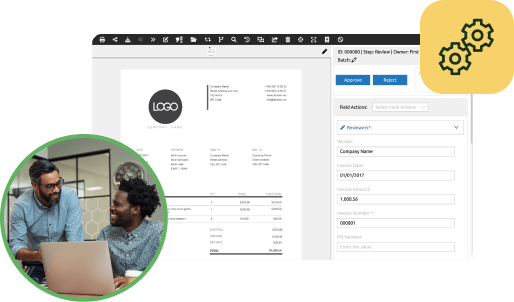It’s no secret that properly managing your nonprofit’s resources is vital to its programmatic and operational success. However, financial management is never simple, no matter your organization’s size or mission. Difficulties and issues will often arise as you set up or change your financial systems, and even minor missteps in your processes can have lasting consequences.
Some of the most common financial management mistakes in the nonprofit sector include:
- Inefficient recordkeeping procedures
- Over-reliance on a single revenue stream
- Misallocation of donor-designated contributions
- Inadequate financial staffing to meet organizational needs
In this guide, we’ll discuss tips for improving your nonprofit’s financial management processes, each of which is tailored to help you address one of the challenges listed above. Let’s get started!
1. Invest in a Robust Accounting Platform
In today’s digital world, you can make almost any nonprofit process (from volunteer management to event planning) more effective by using software designed specifically for that activity. Financial management is no different—adopting a dedicated accounting platform is the best first step toward cleaning up inefficient or outdated recordkeeping procedures.
To select the right accounting software for your organization, make sure to:
- Establish purchasing criteria. Make lists of software features you consider must-haves (such as account configurations that align with Form 990 filing requirements and restricted fund tracking—more on that later!) and nice-to-haves (like accounts payable automation and grant management tools). At this stage, you should also consider your budget and implementation timeline for a new accounting platform.
- Research potential vendors. Browse various software websites, note core features and pricing plans, and read reviews of each platform to get a sense of how well it works for real users. Keep in mind that some of the top accounting solutions on the market are nonprofit-specific, while others are primarily designed for businesses but can be customized for nonprofit use, so you shouldn’t rule out either type too quickly.
- Schedule demos of your top choices. Live demos give you the opportunity to see how the software works in practice and ask specific questions of a product expert. Once you’ve attended a few demos, review them with your team to make an informed final decision together.
When you implement your new accounting platform, remember to import historical data and key documents (recent tax returns, budgets, financial statements, etc.). Then, create standardized guidelines for entering, reconciling, and reviewing financial data to maintain accuracy over time.
2. Diversify Your Revenue Streams
Revenue diversification is an integral factor in your nonprofit’s financial stability. When you don’t rely too heavily on any single funding source, it becomes easier to recover if you fall short of a fundraising goal or incur unexpected expenses since you can make up the revenue you need through other methods. Plus, you can gather even more support for your mission by opening up multiple avenues for community members to contribute!
Here is a quick breakdown of the five major types of nonprofit revenue and some popular examples of each one:
- Individual donations: Small, mid-sized, major, and planned monetary gifts; fundraising event revenue; in-kind contributions of goods, services, and immaterial assets (stocks, real estate, etc.)
- Corporate philanthropy: Sponsorships, matching gifts, volunteer grants, payroll donations
- Earned income: Membership dues, merchandise sales, product fundraising revenue, fees for mission-related services (e.g., museum ticket sales or animal shelter adoption costs)
- Investments: Endowments, bonds, treasury bills, mutual funds, interest earned on savings accounts
- Grants: Federal, state, and local government grants; public, private, and family foundation grants
In your accounting platform, organize your revenue records by source so you can report your funding accurately and make data-driven decisions about fundraising goals and budgeting.
3. Carefully Track Funding Restrictions
When donors and funders give large amounts of money to nonprofits, they typically want some control over how those funds are spent to ensure they support initiatives that align with their personal values or philanthropic priorities. So, they’ll often place restrictions on their gifts, or designate them to be used only for specific projects or programs.
As Jitasa’s guide to restricted funds explains, every contribution your nonprofit receives will fall into one of three categories:
- Unrestricted funds have no designations associated with them, so you can put them toward any of your nonprofit’s expenses. Small to mid-sized individual and corporate contributions, earned income sources, and investment returns are usually unrestricted.
- Permanently restricted funds typically take the form of endowments, which Infinite Giving defines as “a dedicated source of long-term funding made up of donations that support a philanthropic organization’s mission and work.” Your nonprofit doesn’t spend these donations directly—instead, you’ll invest them and use the returns to fund an initiative you’ve agreed upon with the contributor(s).
- Temporarily restricted funds are bound by a time limit or specific purpose. Once the time expires or the purpose is fulfilled (e.g., a project is completed), any remaining funds can be released from restriction and reallocated. Most major and planned gifts, grants, and corporate sponsorships fall into this category.
Misallocating restricted funds (whether intentionally or accidentally) doesn’t just damage your nonprofit’s relationship with the donor, grant maker, or company who contributed that funding. It can hurt your organization’s reputation within its entire community and lead to various legal consequences, from fines to lawsuits to losing your tax-exempt status. That’s why it’s critical to stay on top of all funding restrictions as you bring in and spend organizational resources.
4. Leverage Outsourced Financial Services
Your nonprofit needs several dedicated professionals working on its finances to ensure all necessary tasks are completed accurately and in a timely manner. However, small and mid-sized organizations don’t always have the budget to hire multiple full-time financial employees, or enough responsibilities to justify doing so.
This is where outsourced financial services come into play. Working with contracted professionals or third-party firms can provide your nonprofit access to all of the expertise of a full-time team member at a significantly lower cost. Plus, most outsourced services are scalable, so you can have these professionals handle the exact financial duties your organization needs covered at any given time.
There are a few different financial roles your nonprofit could have outsourced professionals fill, including the positions of:
- Bookkeeper: Manages recordkeeping and other everyday financial responsibilities (bank deposits, vendor payments, etc.)
- Accountant: Performs various financial analysis and reporting duties such as account reconciliations, financial statement creation, and tax filings.
- Chief financial officer (CFO): Works closely with your leadership team on financial strategy tasks like budgeting, cash flow forecasting, and fiscal policy development.
- Controller: Essentially combines the roles of an accountant and a CFO, managing analytical, reporting, and strategic responsibilities while often overseeing a larger finance committee.
No matter which roles you outsource, always look for professionals with nonprofit-specific experience. Nonprofit financial management is very different from its for-profit counterpart, and you need team members who thoroughly understand your organization’s situation and can develop tailored solutions to help you achieve your goals.
By following the tips above, your nonprofit can not only overcome its biggest financial challenges but also build a strong foundation for long-term impact and sustainability. If you aren’t sure which issues your organization should address, consider conducting a financial audit to help you identify the areas where you’d benefit most from strategic improvements in the near future.






